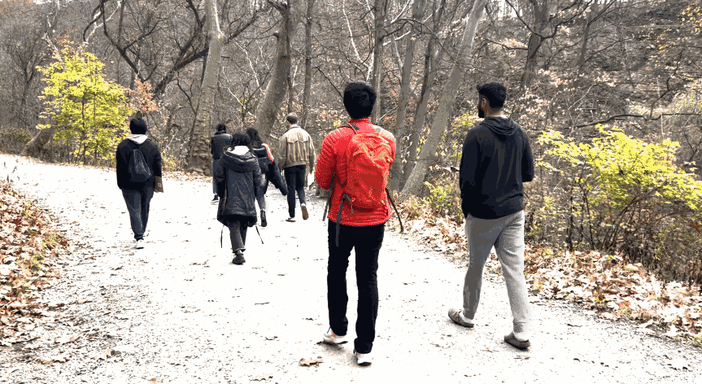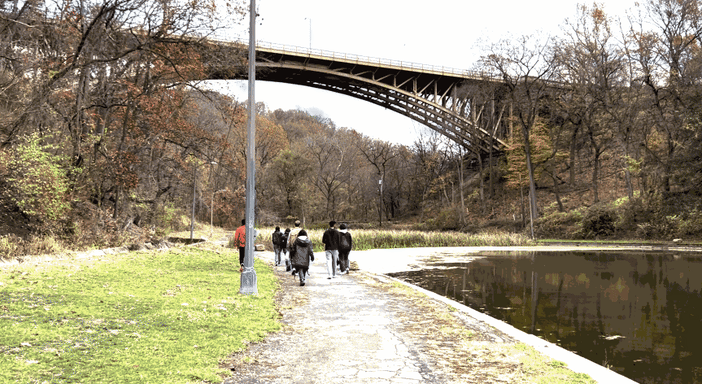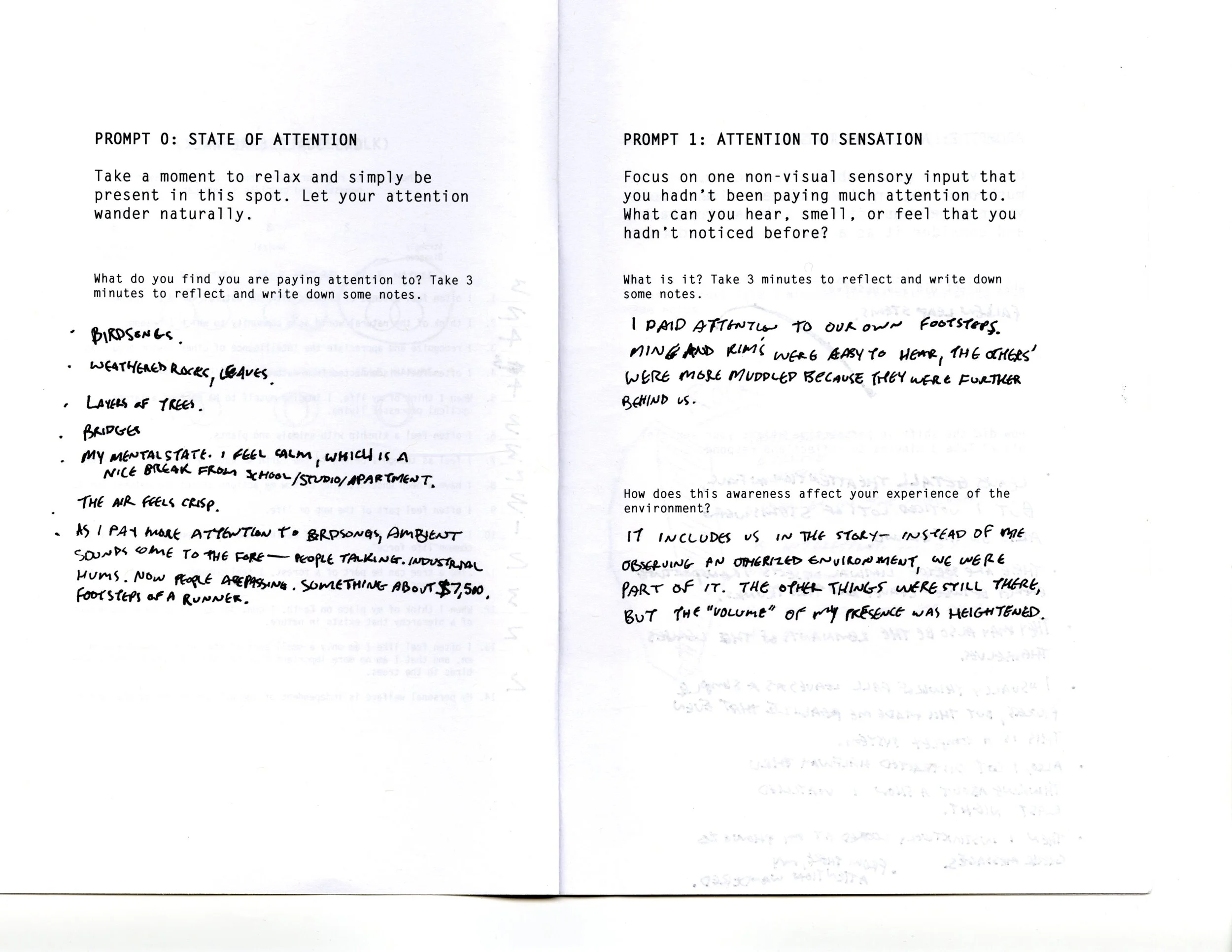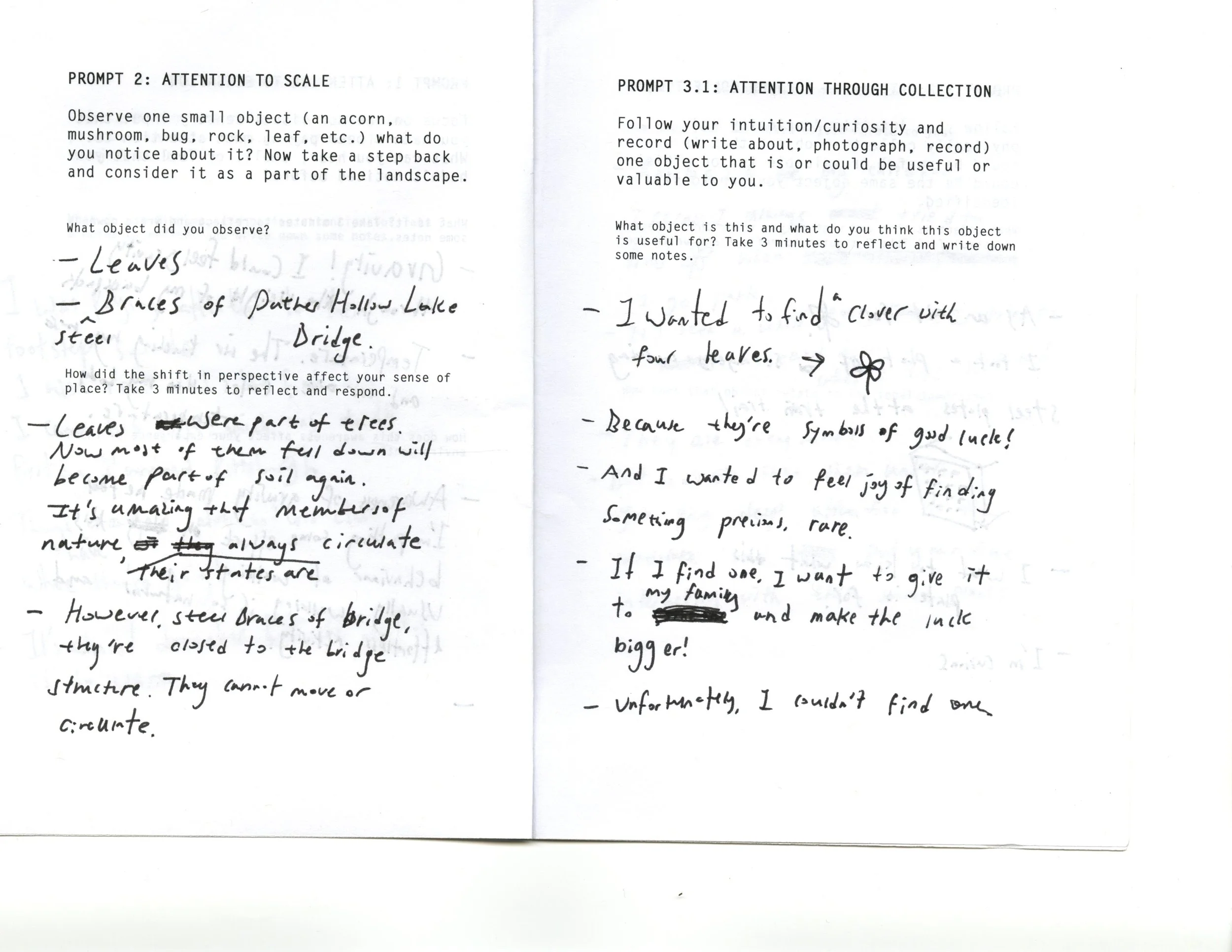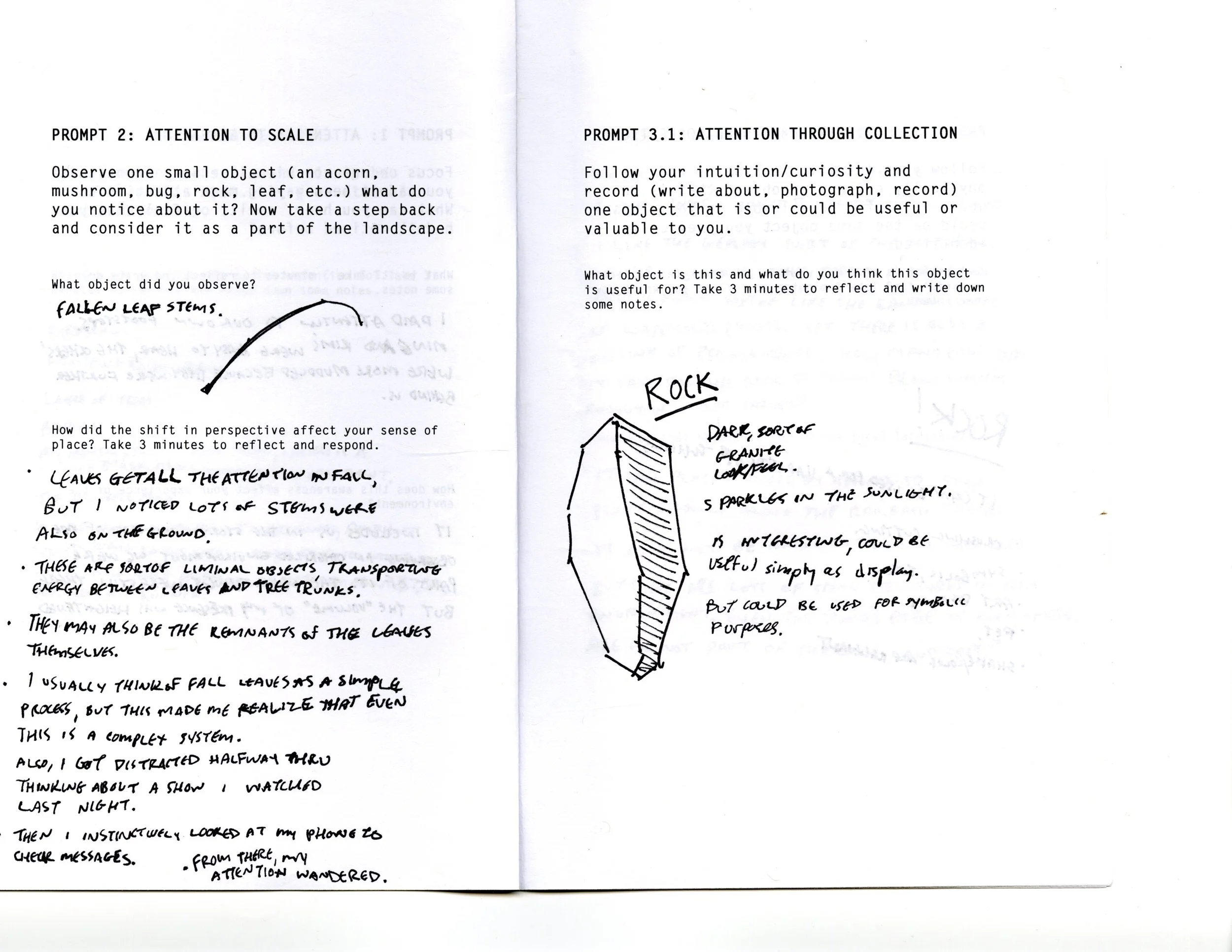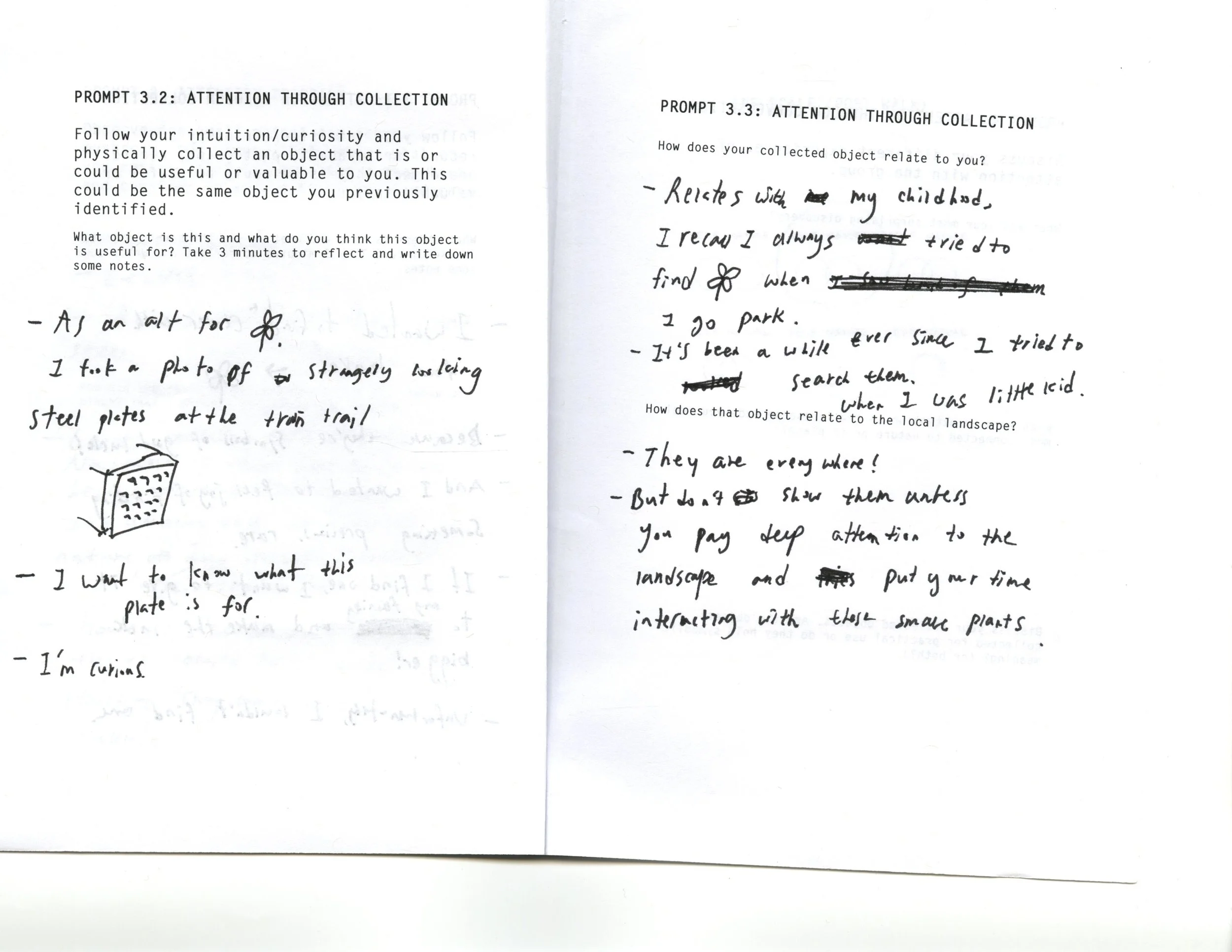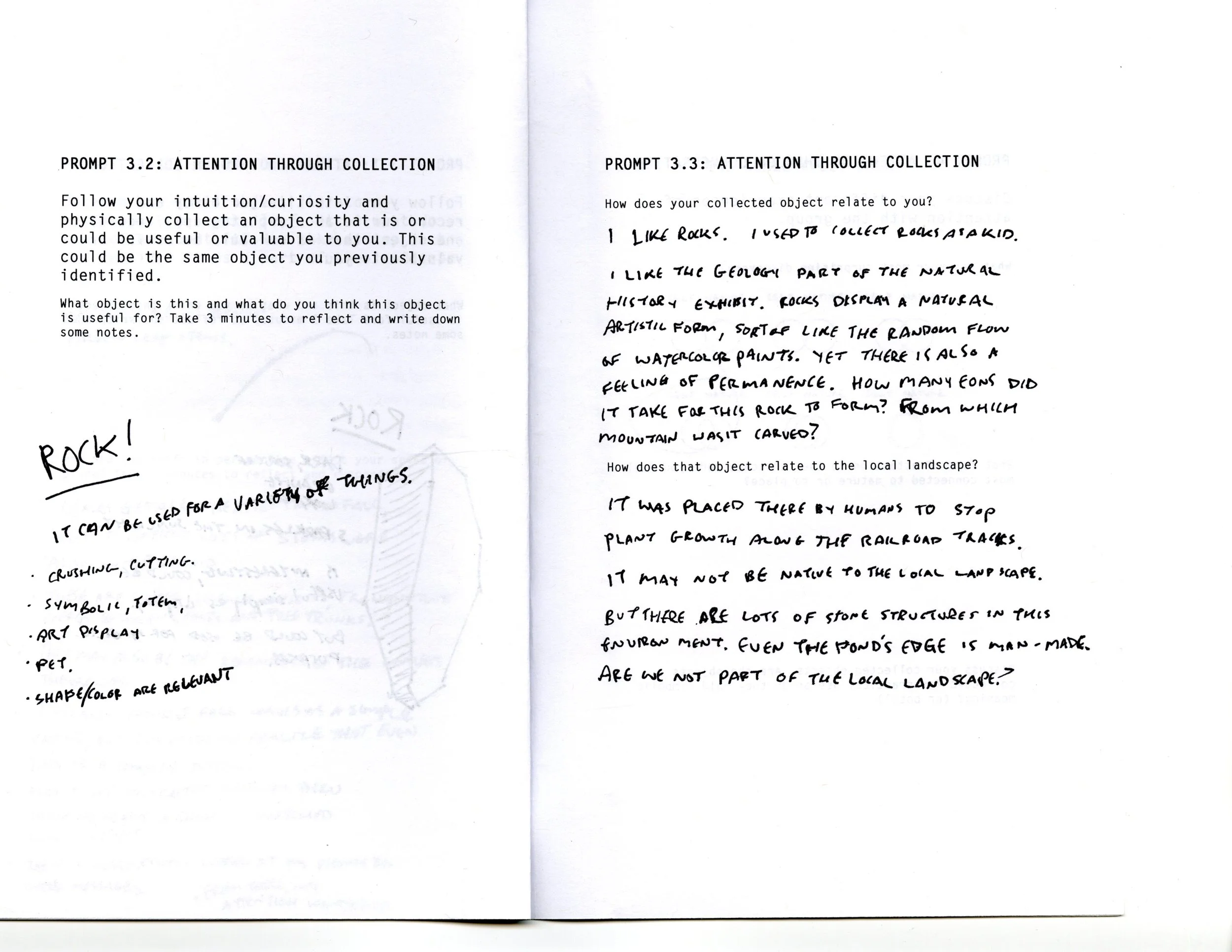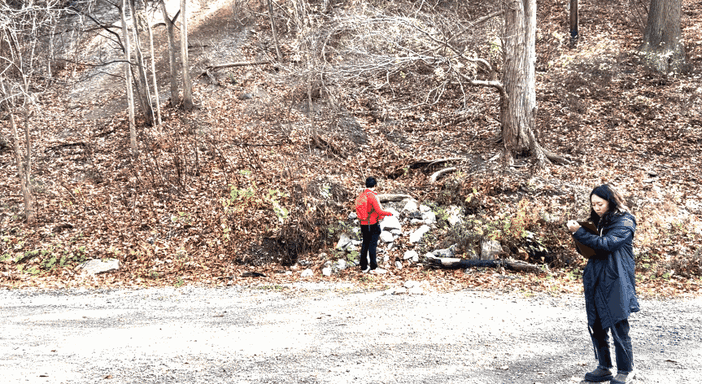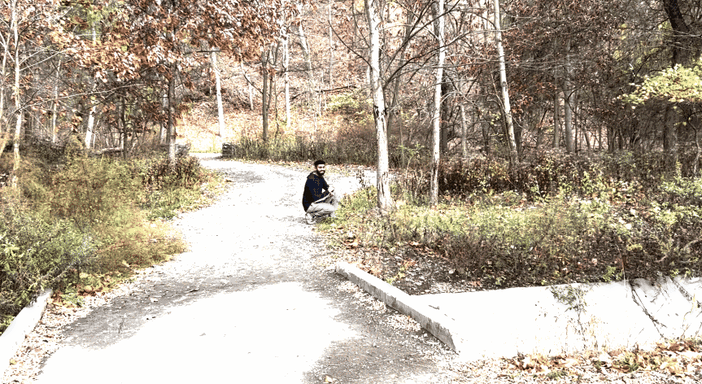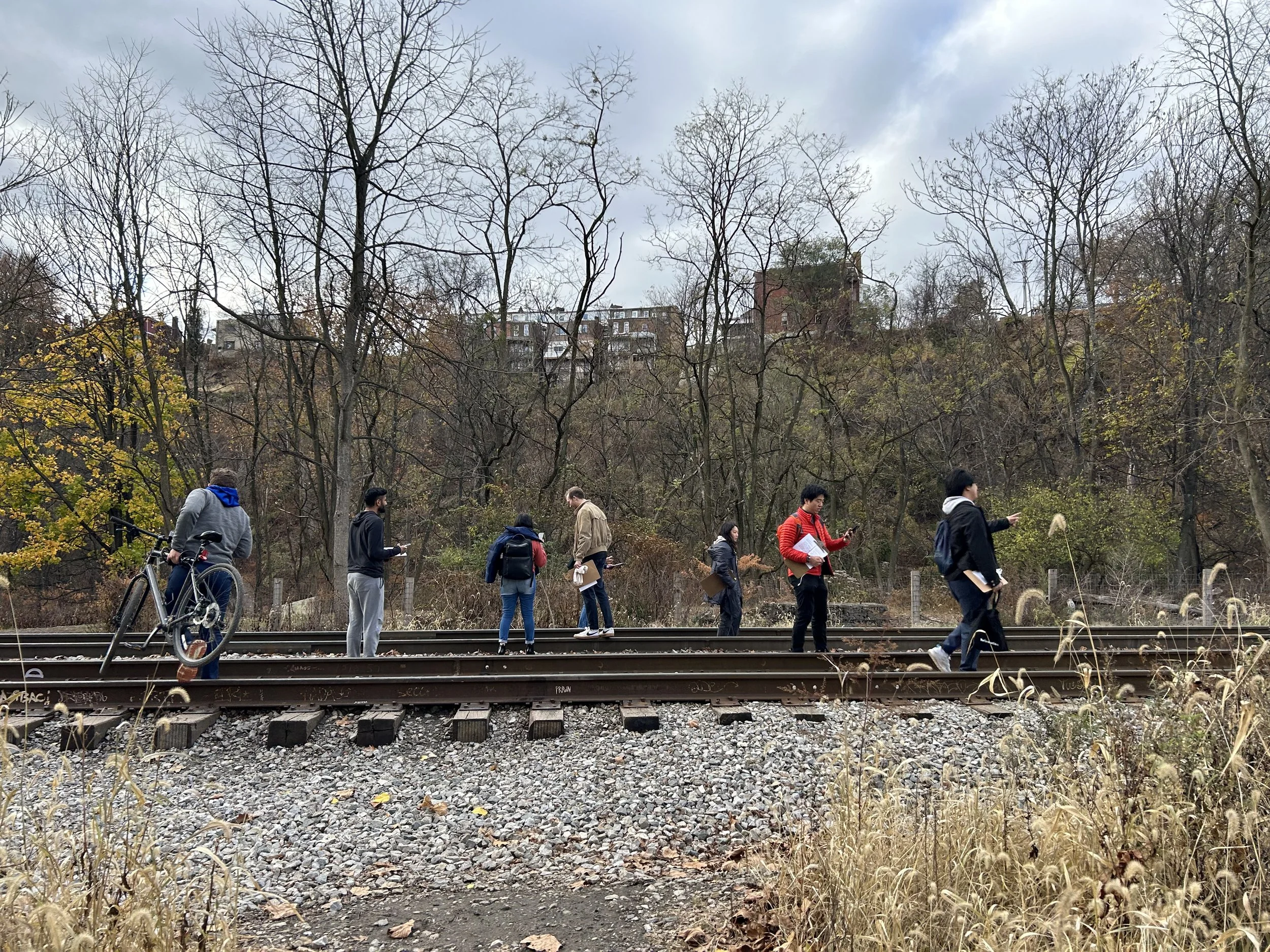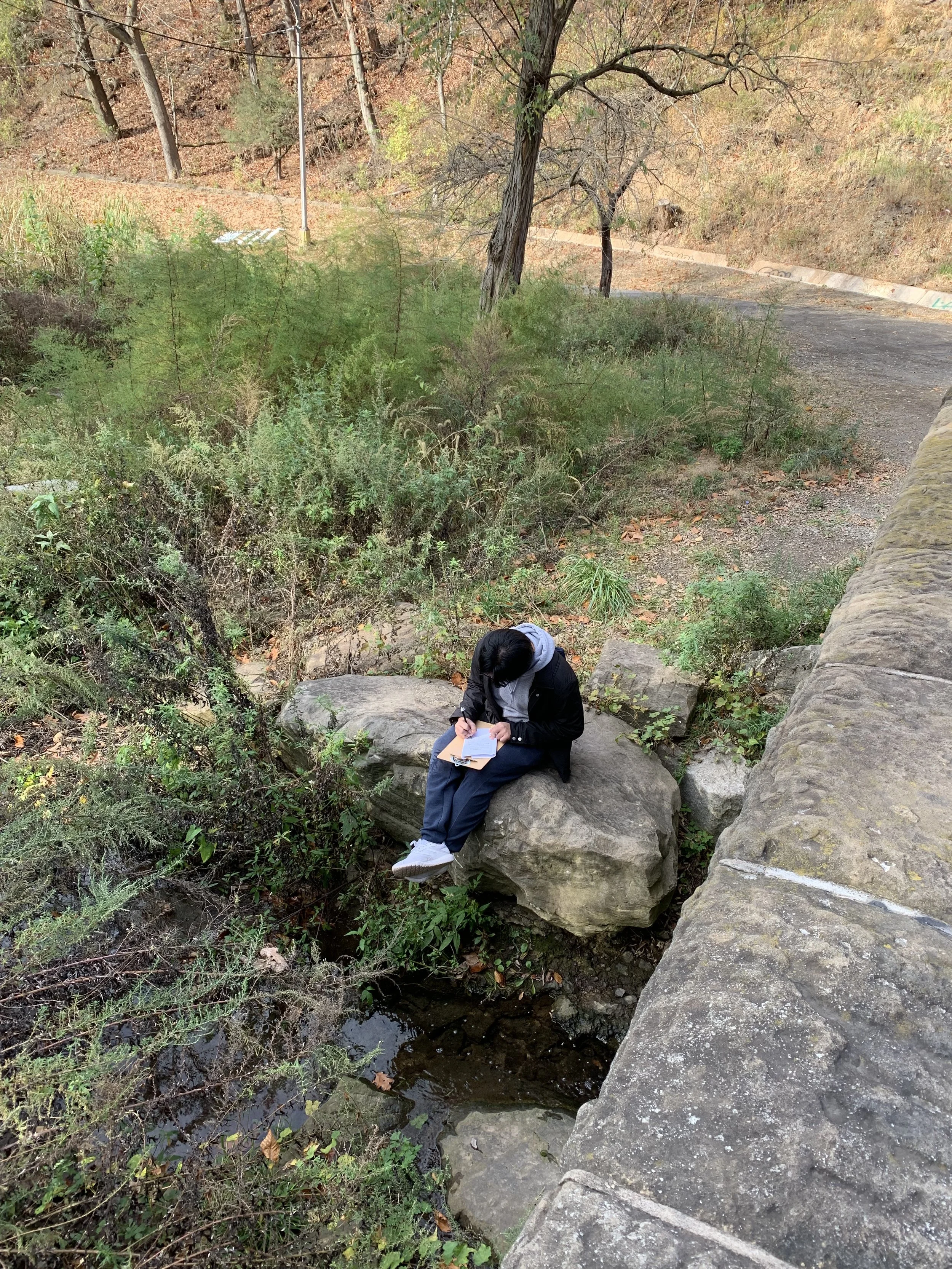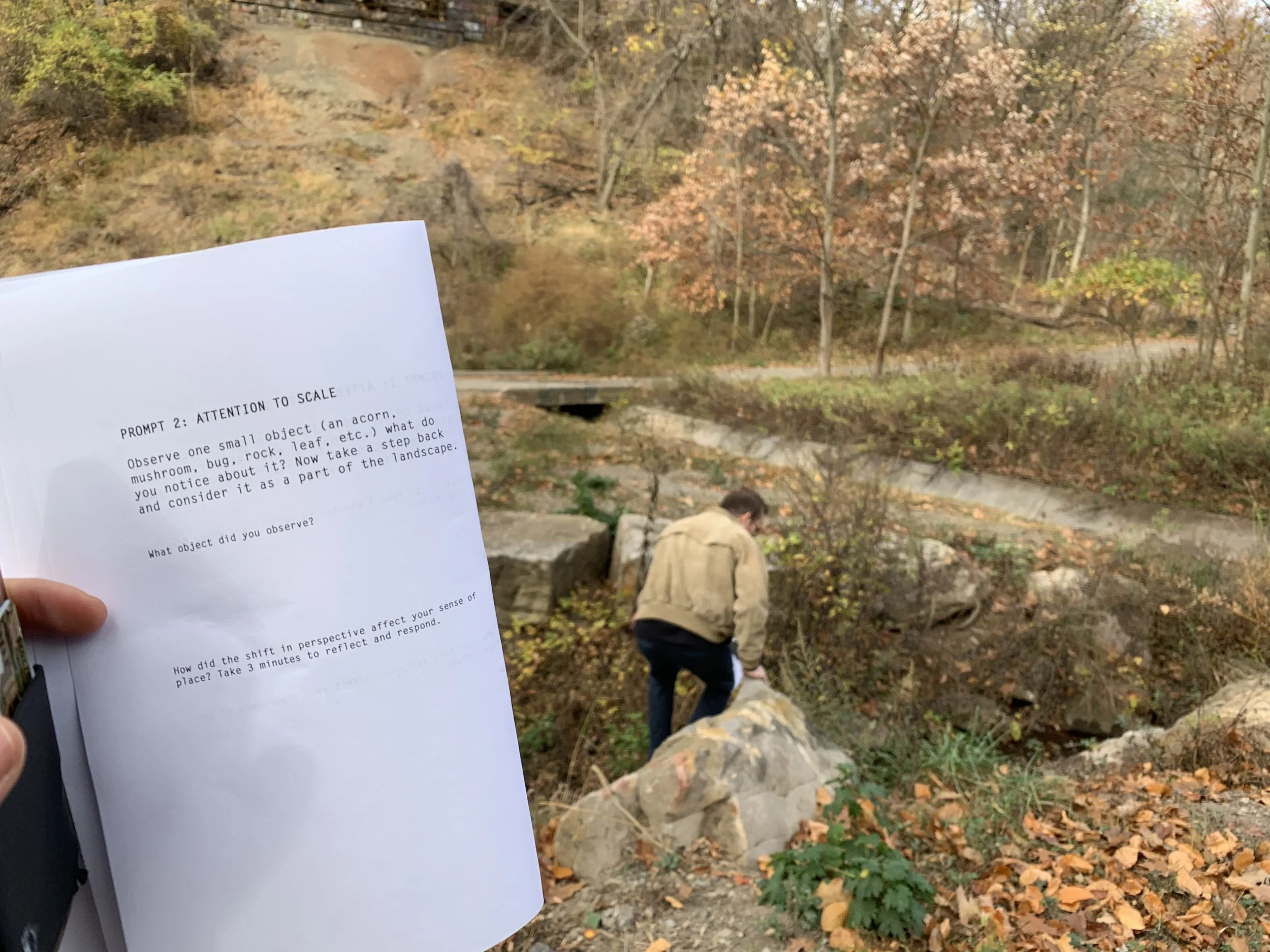
Corpus Loci:
Technology, Attention & Connection to Place
Walking workshops and interviews investigating how college students engage with local landscapes
Kimberly Blacutt, Master's Thesis Research, Carnegie Mellon University, 2024-2025
How does technology affect our connection to place? I spent a year investigating this question through walking workshops and conversational interviews with college students in Pittsburgh.
My research revealed that where a person is might be best understood as where their attention is. Physical presence doesn't guarantee connection to place - technology plays a complex dual role, sometimes enhancing our awareness of surroundings and sometimes pulling us away from them entirely.
Walking Workshops: Exercising Attention
I led five walking sessions through Schenley Park with 22 participants, prompting them to focus their attention on the landscape in different ways. The walks were approximately one hour long and involved groups of 3-6 participants.
I designed prompts to encourage different forms of engagement with surroundings:
Prompt 0: State of Attention
Take a moment to relax and simply be present in this spot. Let your attention wander naturally. What do you find you are paying attention to?
Prompt 1: Attention to Sensation
Focus on one non-visual sensory input that you hadn't been paying much attention to. What can you hear, smell, or feel that you hadn't noticed before?
Prompt 2: Attention to Scale
Observe one small object (an acorn, mushroom, bug, rock, leaf) - what do you notice about it? Now take a step back and consider it as a part of the landscape.
Prompt 3: Attention Through Collection
Follow your intuition/curiosity and collect an object that is or could be useful or valuable to you.
What I Discovered
Participants noticed things they'd walked past hundreds of times but had never actually seen. One person observed: "I paid attention to our own footsteps, mind and Kim's were easy to hear, the others' were more muffled because they were further behind us."
Another realized: "Leaves get all the attention in fall, but I noticed lots of stems were also on the ground. These are sort of liminal objects, transporting energy between leaves and tree trunks."
Participants noticed things they'd walked past hundreds of times but had never actually seen. One person observed: "I paid attention to our own footsteps, mind and Kim's were easy to hear, the others' were more muffled because they were further behind us."
Another realized: "Leaves get all the attention in fall, but I noticed lots of stems were also on the ground. These are sort of liminal objects, transporting energy between leaves and tree trunks."
Conversational Interviews: Technology's Dual Role
I conducted 10 in-depth interviews (30-60 minutes each) with college students from CMU, Duquesne, and University of Pittsburgh. Ages ranged from 20-28, representing diverse disciplines and international backgrounds.
I asked participants to describe their recent outdoor experiences, what they pay attention to, what they value, and how technology impacts their experiences.
Key Finding: Technology's Complex Role
My assumption that technology primarily disconnects people from landscapes was challenged. Technology plays a dual role - the same device can simultaneously enhance connection (providing information about surroundings) while creating barriers (redirecting attention away).
Four patterns emerged:
Enhanced Place Connection: Technology deepens awareness (using apps to identify plants, recording bird sounds to learn more)
Pleasant Displacement: Intentional digital escape that enhances experience (listening to music, calling loved ones while walking)
Digital Distraction: Digital world pulls attention from physical place negatively (reading stressful emails, mindless scrolling)
Undesired Interference: Technology diminishes quality of experience even when place-related (recording a sunset but missing the experience of watching it)
One participant explained: "I remember this specific instance on a trip... there was a lot of fog, so it was a very beautiful scene to look at, and I wanted to capture that as a video. When I was capturing it, I was looking at the phone. So instead of looking at the huge view, I was looking at it on my screen. After it ended, I regret that I kept looking at the beautiful scene on a tiny screen instead of the vast thing that was actually in front of me.
Embodied Experience Matters
Several participants described how fully embodied interactions encouraged more present engagement with landscapes. Emma explained the difference between walking on paved versus unpaved surfaces: "On an unpaved surface, I am acutely aware of my body and surroundings... While walking on paved campus paths I don't really need to pay close attention to my footsteps and the terrain."
What This Means
This research revealed that:
Physical presence doesn't equal attention to place. Where we are is best understood as where our attention is.
Technology's impact depends on intention. The same tool can enhance or diminish connection depending on how we use it.
Material disconnection is widespread. Young people struggle to perceive material affordances in landscapes beyond aesthetic appreciation.
Attention can be cultivated. Structured prompts help people notice what typically remains unseen.
Much of our world remains unseen despite being visible. Perhaps we experience a sense of place at a human scale, but in each place, there are worlds within worlds.
This research directly informed the Corpus Loci framework I developed - a design approach for reconnecting youth with local landscapes through intentional technology use that supports rather than distracts from embodied, place-based experiences.
Research Methods:
Auto-ethnographic observations, conversational interviews (n=10), generative walking workshops (n=22), INS and CNS scale measurements
Related Work:
This methodology was inspired by Jennifer Roberts' "Power of Patience," Georges Perec's An Attempt at Exhausting a Place in Paris, and Larry Buchanan's "10-Minute Challenge" series.
